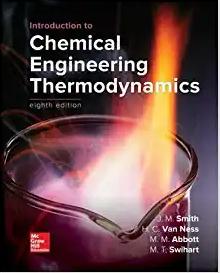Answered step by step
Verified Expert Solution
Question
1 Approved Answer
Suppose that a solid of indefinite thickness is subjected to a constant heat flux q 0 at x = 0 , beginning at t =
Suppose that a solid of indefinite thickness is subjected to a constant heat flux at beginning
at It occupies the space and its initial temperature is uniform at The solid's thermal
conductivity is and its thermal diffusivity is
a State the partial differential equation, boundary conditions, and initial conditions that govern
Use orderofmagnitude reasoning to infer that both the penetration depth and the surface temperature.
transformations when seeking a similarity solution?
and are positive constants. Hint: You have two unknowns, the characteristic and and two
equations, the PDE for and the flux boundary condition on which you can orderofmagnitude estimate.
b Set and and use the similarity method to show the derivation of the ODE
governing
State the boundary conditions on
c The general solution to this ODE is
AierfcBierfc
where ierfc is the integral of the complementary error function
ierfcxdserfcsxerfcx
Use the boundary conditions to complete the solution for
d How does from the similarity solution in part b compare with the orderofmagnitude estimate
in part a
e Plot your similarity solution and compare the results to the similarity solution for transient conduction
with a constant temperate boundary condition. Transient conduction is identical to transient diffusion, so
use the solution from Ex with substitutions and Make three
plots:
constant flux: for several
similarity solution: vs for both constant flux and constant temperature boundary conditions
Use the values and when plotting.

Step by Step Solution
There are 3 Steps involved in it
Step: 1

Get Instant Access to Expert-Tailored Solutions
See step-by-step solutions with expert insights and AI powered tools for academic success
Step: 2

Step: 3

Ace Your Homework with AI
Get the answers you need in no time with our AI-driven, step-by-step assistance
Get Started


